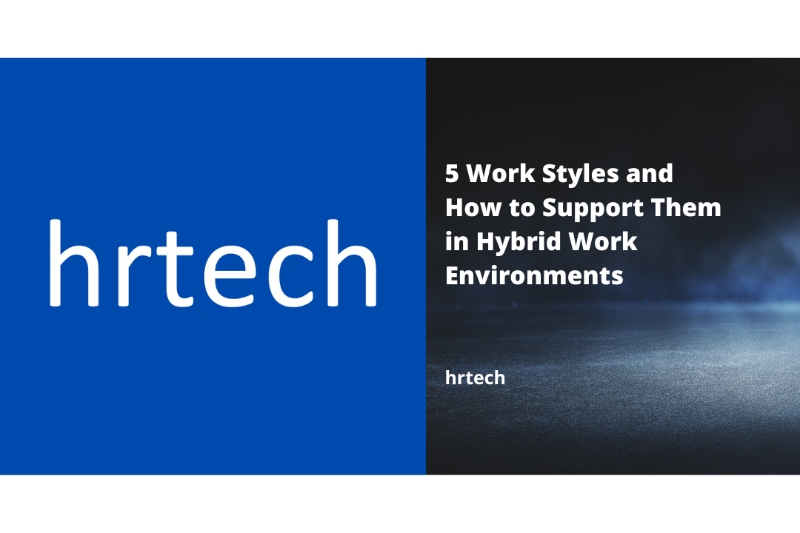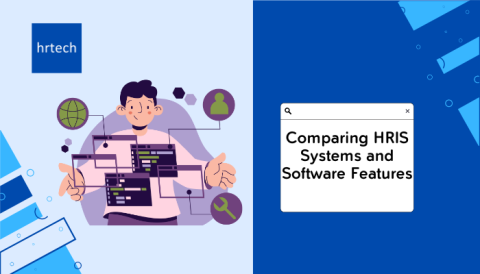Work styles refer to how employees approach their work and projects and, in turn, how they impact the productivity of the company. They typically stem from employees’ unique personalities, showing how they naturally work and highlighting their strengths.
by hrtech

If there’s one thing contemporary employers around the world can agree on, it’s that the COVID-19 pandemic has widely reshaped the landscape of the corporate environment. Due to the lockdowns, quarantines, and social distancing measures during the first few years of the pandemic, businesses were required to embrace remote work as a means of ensuring the safety of their employees while sufficiently maintaining their operations.
Post-pandemic, employers and employees alike have had the time to discover the benefits of exclusively work-from-home (WFH) arrangements and hybrid arrangements, which call for the occasional onsite visit to business headquarters. With a less demanding commute and an opportunity to explore flexible work environments, contemporary professionals can now enjoy better work-life balance—boosting both their wellness and their productivity as a result.
Now that hybrid options have proven viable, it is now the challenge of employers to motivate their employees and ensure their growth in such a dynamic and sometimes unpredictable environment. That challenge comes with the need to reconfigure the office space to support hybrid work, for example by creating effective work schedules, recommending a mobile plans comparison to employees working from home, and implementing the fairest hybrid work policies.
Another part of the equation lies in accommodating the different work styles so that employees with diverse perspectives can thrive in their work both at home and in the physical office. In this article, let’s learn about the common work styles and how employers can best support them in a hybrid work set-up.
A Guide to the Different Work Styles
Work styles refer to how employees approach their work and projects and, in turn, how they impact the productivity of the company. They typically stem from employees’ unique personalities, showing how they naturally work and highlighting their strengths.
The most common work styles that people gravitate towards are the following:
1) Task-Oriented
Employees with this work style like to focus on completing specific tasks efficiently and methodically. They find joy in setting clear goals and following systematic approaches when accomplishing their tasks. They’re often organised and adept at managing their workload. Additionally, they make it a point to meet their deadlines and are conscientious about completing projects early or on time.
2) People-Oriented
People-oriented employees place a strong emphasis on collaboration and building relationships in the workplace. They excel in team environments that foster open communication. These employees are often very skilled at building rapport with colleagues and clients, and they also have strong interpersonal skills. Their role is vital when it comes to enhancing team cohesion and morale.
3) Detail-Oriented
Employees who exhibit this work style pay meticulous attention to specifics and accuracy. As such, they excel in tasks that require thorough reviews and quality assurance. They also tend to render high-quality results due to their thorough approach and ability to catch errors that might otherwise be overlooked.
4) Innovative
Individuals with an innovative work style are driven by their creativity and ability to generate new ideas. They’re comfortable experimenting and approaching challenges from unconventional angles. They can also bring fresh perspectives and novel solutions to the table, inspiring creativity within their teams.
5) Flexible
Flexible employees adapt well to changing circumstances and environments, easily switching between tasks and navigating shifting priorities. Their qualities allow them to excel in dynamic environments, where quick adjustments are necessary.
How to Support the Different Work Styles in Hybrid Environments
With hybrid work being a relatively new concept for many companies, managers may have a hard time unlocking employees’ full potential without understanding how to accommodate the latter’s work styles. Fortunately, there are several strategies that companies can implement to support diverse work styles in the hybrid set-up.
For the Task-Oriented Worker
Managers can give employees with a task-oriented work style specific goals for remote and in-office work days. Giving them a clear road map for their tasks will allow them to organise their workload so that they can tackle tasks to the best of their ability. Managers can also train task-oriented employees to use management tools to help them allocate their time effectively and track their progress.
For the People-Oriented Worker
To keep people-oriented employees engaged in their work, managers should regularly organise virtual team-building activities that bridge the gap between in-person and remote interactions. Using video conference tools and chat platforms can make it easier for employees to connect and collaborate with their peers, whether they’re working from home or at the office.
For the Detail-Oriented Worker
When handling detail-oriented employees in the workplace, it’s a good idea for managers to provide them with a quiet and focused workspace to bolster the latter’s focus. This will allow them to work without any interruptions and successfully accomplish tasks that require precision. On their work-from-home days, however, clear remote work protocols and communication channels must be established to ensure that detailed-oriented workers can maintain their accuracy and dedication to quality.
For the Innovative Worker
Innovative employees may take well to brainstorming sessions and other opportunities for idea sharing in a physical office. On remote work days, it’s a good idea for managers to organise virtual workshops to encourage their employees to share new ideas and enhance their creative thinking skills.
For the Flexible Worker
Because of their ability to adapt to their work environment, flexible workers may not have a hard time working on their tasks, no matter the location. However, managers should establish core hours for team collaboration while allowing flexibility outside those hours. This will enhance a flexible worker’s productivity while still allowing them to achieve good work-life balance.
These strategies are just a starting point for supporting different work styles in the dynamic hybrid work environment. Managers will do well to embrace these tips and tailor them to the business’s vision as well as the specific needs of their team members. This is the way towards establishing an inclusive and productive environment where each individual can put their best forward, whether at home or in the office.
About the Author:

Founded in 2018, we are a Singapore-based HRTech Analyst firm dedicated to facilitating Workplace and Workforce Transformations that drive impactful Business and HR outcomes. Our ultimate vision is to empower HR professionals to transform their organizations by seamlessly integrating technology and human-centric approaches.
From our very beginning, we have been committed to building a TECH-DRIVEN and DATA-CENTRIC HR ECOSYSTEM that empowers organizations to achieve successful Workplace and Talent Transformations, while enabling HR teams to evolve into Strategic Business Partners.
At hrtech, we recognize the paramount importance of adapting to the ever-changing demands of the modern workplace. Our unique value proposition lies in automating and digitizing HR processes to initiate a transformative mindset shift. By embracing our ecosystem, organizations can leverage the power of technology to streamline operations, enhance Business and HR productivity and efficiency, elevate employee experiences, and unlock their full potential.
Our comprehensive ecosystem serves as a catalyst for the digital transformation of HR functions, enabling you to optimize efficiency, foster innovation, and cultivate a thriving workforce amidst constant change. To facilitate this transformation and drive organizational success, we operate through our four distinct verticals of Academy, Advisory & Consulting, Marketplace Solutions and Talent OnDemand.
Continue Reading: Designing and delivering a great employee experience in the hybrid workplace



